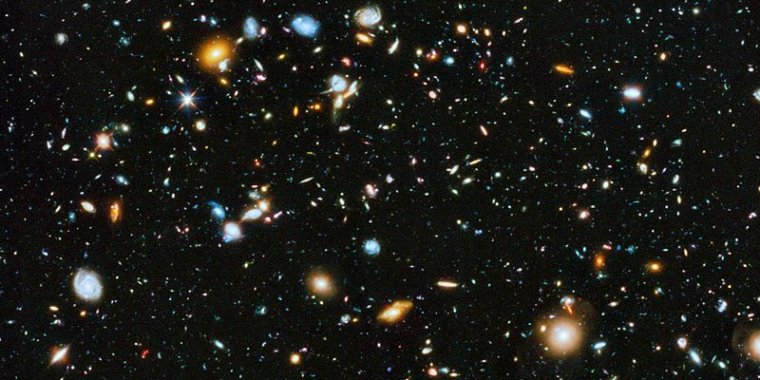| News / Science News |
Measuring Growth of Universe Reveals a Mystery
Astronomers have made the most precise measurement to date of the rate at which the universe is expanding, but the new number remains at odds with independent measurements of the early universe’s expansion, which could mean that there is something unknown about the makeup of the universe.

Most Colorful View of Universe. Image credit: NASA
The team, which includes researchers from Johns Hopkins University and the Space Telescope Science Institute, has used the Hubble telescope over the past six years to refine the measurements of the distances to galaxies. Those measurements are used to calculate how fast the universe expands with time, a value known as the Hubble constant.
Separate measurements from the European Space Agency’s Planck satellite, which maps the cosmic microwave background, predicted that the Hubble constant value should now be 67 kilometers per second per megaparsec. This would mean that for every 3.3 million light-years farther a galaxy is away from us, it is moving 67 kilometers per second faster.
But the team measured a value of 73 kilometers per second per megaparsec, indicating galaxies are moving at a faster rate than implied by the Planck satellite observations of the early universe.
The Hubble data are so precise that astronomers cannot dismiss the gap between the two results as errors in any single measurement or method.
One possibility is that dark energy, already known to be accelerating the cosmos, may be shoving galaxies away from each other with even greater—or growing—strength. This means that the acceleration itself might not have a constant value in the universe but changes over time.
Another idea is that the universe contains a previously unknown new subatomic particle that travels close to the speed of light. Such speedy particles are collectively called “dark radiation” and include previously known particles like neutrinos, which are created in nuclear reactions and radioactive decays. Unlike a normal neutrino, which interacts by a subatomic force, this possible new particle would be affected only by gravity and is dubbed a “sterile neutrino.”
Yet another attractive possibility is that dark matter—an invisible form of matter not made up of protons, neutrons, and electrons—interacts more strongly with normal matter or radiation than previously assumed. (Tasnim News Agency)
YOU MAY ALSO LIKE





